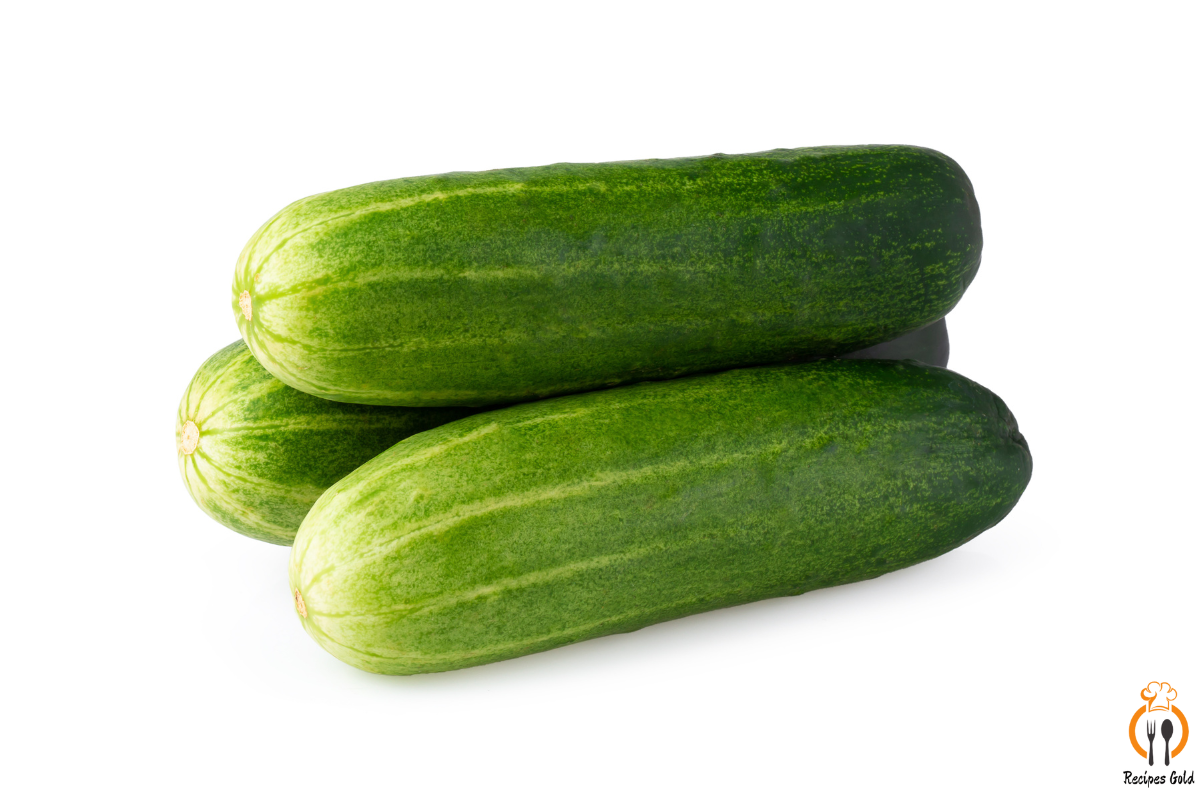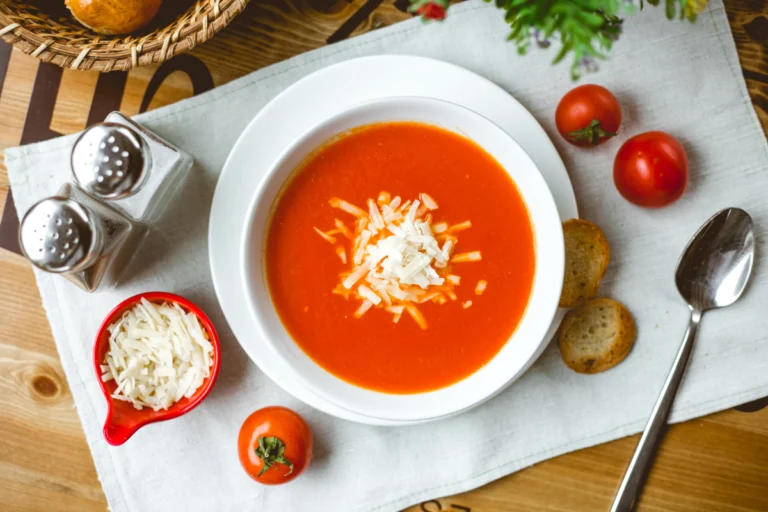The Ultimate Guide to Kirby Cucumbers: From Garden to Table
In the bustling world of culinary delights, a small yet mighty contender stands out in the garden and kitchen alike: the Kirby cucumber. Renowned for its crisp texture and versatility, this miniature marvel is a staple in salads, pickles, and many healthy snacks. As we delve into the wonders of Kirby cucumbers, we uncover not just a food item, but a gateway to understanding the rich tapestry of gardening, cooking, and nutritional benefits that these cucumbers bring to the table. Join us on a journey through the origins, characteristics, and myriad uses of the Kirby cucumber, as we explore why this variety has captured the hearts of chefs and gardeners around the globe.
Introduction to Kirby Cucumbers
What Is Kirby Cucumber?
Ah, the Kirby cucumber, a name that might not ring a bell for every veggie lover out there, but trust me, it’s a game-changer in the world of cucumbers. Picture this: a small, crunchy cucumber, not your average green giant, but rather a miniature powerhouse packed with flavor. These cucumbers are the unsung heroes of the pickle world and a fresh addition to any dish that calls for a crispy, refreshing bite.
Unlike their larger counterparts, Kirby cucumbers boast a rough, bumpy skin, making them easily distinguishable. They’re not just any cucumber; they’re the go-to variety for pickling because of their firmness and minimal seeds. Plus, their size is just perfect, ranging from 3 to 6 inches long, making them an ideal snack for a quick, nutritious bite or a colorful addition to your next garden salad.
History and Origin of Kirby Cucumbers
Diving into the roots of the Kirby cucumber, it’s like peeling back the layers of a story rich with agricultural history and culinary evolution. While the exact lineage might be as murky as the brine in a pickle jar, it’s clear that these cucumbers have carved out a niche for themselves in kitchens around the world.
Emerging from a lineage of cucumbers cultivated for their crisp texture and suitability for pickling, Kirby cucumbers have become synonymous with homemade pickles and fresh, crunchy salads. Their history is a testament to the agricultural practices that favor taste, texture, and versatility, marking them as a favorite among gardeners and chefs who cherish these qualities.
As we wrap up this introduction to the delightful world of Kirby cucumbers, it’s evident that these little green wonders are more than just a component of our diets. They’re a bridge to understanding the importance of variety, quality, and tradition in our culinary practices. Stay tuned as we continue to explore the many facets of Kirby cucumbers, from their nutritional benefits to their starring role in dishes worldwide.
Characteristics of Kirby Cucumbers
Physical Description
Kirby cucumbers, often spotted in the produce aisle, are the rugged, less polished cousins in the cucumber family. With their distinctive bumpy skin and stout shape, they’re easily recognizable. These little guys range from a petite 3 inches to a more robust 6 inches in length, making them the perfect size for a single serving of crunchy goodness. Their skin, a vibrant green canvas, is slightly thicker than that of their salad cucumber relatives, which helps them maintain their signature crunch even after pickling. Inside, the flesh is firm and less watery, containing fewer seeds than you might expect, contributing to their substantial feel and satisfying bite.
Nutritional Profile
When it comes to the nutritional punch these cucumbers pack, you might be surprised at the bounty within their compact size. Kirby cucumbers are a hydrating powerhouse, boasting a high water content that makes them an ideal snack for staying refreshed. But the benefits don’t stop at hydration; these cucumbers are also a source of vitamin K, essential for blood clotting and bone health. They provide a modest dose of vitamin C, supporting immune function, and potassium, which is vital for heart health and muscle function. Adding Kirby cucumbers to your diet is an easy way to munch your way to better health, with the bonus of very few calories.
Taste and Texture
Let’s talk flavor and feel—Kirby cucumbers are the epitome of crunch. Their texture is what sets them apart from the cucumber crowd. Biting into a Kirby is an experience—a crisp, refreshing crunch that’s followed by a mild, slightly sweet flavor. They lack the bitterness sometimes found in larger cucumbers, making them a favorite for both fresh consumption and pickling. Whether you’re slicing them up for a salad, dunking them in hummus, or brining them for pickles, Kirbys bring a fresh, clean taste and a satisfying snap that enhances any dish.
As we delve deeper into the world of Kirby cucumbers, it’s clear these versatile veggies are not just a culinary delight but also a nutritional treasure. Their unique characteristics, from their crunchy texture to their nutritional benefits, make them a standout choice for health-conscious foodies and culinary adventurers alike. Next up, we’ll explore the myriad ways Kirbys can be used in the kitchen, from pickling to fresh dishes, proving that good things indeed come in small packages.
Culinary Uses of Kirby Cucumbers
Pickling and Preserving
Kirby cucumbers and pickling go together like peas in a pod. Their firm texture and small size make them the ideal candidate for transforming into crispy, tangy pickles. When submerged in a brine of vinegar, water, salt, and a melody of spices, these cucumbers absorb flavors like a sponge, resulting in a pickle that’s both flavorful and satisfyingly crunchy. Whether you’re a fan of dill, sweet, or spicy pickles, Kirbys are versatile enough to suit any taste preference. Home pickling is not just a way to enjoy these cucumbers year-round; it’s also a delightful journey into the world of canning and preserving, where the possibilities are as endless as your imagination.
For those looking to dive into the art of pickling, Your Guide to Pickling Cucumbers offers a treasure trove of information, tips, and recipes to get you started on your pickling adventure.
Fresh Uses in Salads and Dishes
Beyond the brine, Kirby cucumbers shine in their natural, unadulterated form. Their crunchy texture and refreshing taste make them a stellar addition to salads, offering a pop of freshness that elevates any dish. Slice them thin for a classic cucumber salad, dice them for a chunky salsa, or cut them into sticks for an easy, healthy snack. Kirbys are also a fantastic complement to sandwiches, wraps, and sushi, adding crunch and moisture without overwhelming other flavors.
Their versatility extends to the realm of creative culinary uses—think chilled cucumber soup on a hot summer day, cucumber-infused water for a spa-like refreshment, or even a crunchy cucumber salsa to accompany grilled fish or chicken. The key to unlocking the full potential of Kirby cucumbers in fresh dishes lies in experimentation and a willingness to explore different flavor combinations and textures.
As we’ve seen, Kirby cucumbers are not just for pickling; their culinary uses span a wide range of dishes and preparations. From the tangy zing of homemade pickles to the crisp freshness of a summer salad, Kirbys bring versatility and flavor to the table in a way that few other ingredients can match. Stay tuned as we delve into the world of growing Kirby cucumbers, where we’ll discover how to cultivate these crunchy gems in your own backyard.
Growing Kirby Cucumbers
Ideal Conditions
Growing Kirby cucumbers can be a gratifying endeavor for both novice and experienced gardeners alike. These cucumbers thrive in warm, sunny conditions, requiring at least 6 to 8 hours of sunlight daily. They prefer well-drained, fertile soil with a pH between 6.0 and 6.8. Before planting, enriching the soil with compost or well-rotted manure can boost growth by providing essential nutrients.
Kirbys are warm-season crops, best planted after the danger of frost has passed and the soil has warmed. In cooler climates, starting seeds indoors a few weeks before the last frost date can give you a head start. When transplanting seedlings outdoors or sowing seeds directly, space them about 18 to 24 inches apart in rows, allowing ample room for growth. Providing a trellis or support system can help manage space and keep fruits clean and off the ground, reducing the risk of disease.
Care and Maintenance Tips
Consistent watering is crucial for Kirby cucumbers, especially during flowering and fruit development. Aim for about 1 inch of water per week, adjusting based on rainfall and temperature. Mulching around plants can help retain soil moisture and control weeds. However, it’s essential to avoid overwatering, as this can lead to root rot and other issues.
Regular monitoring for pests and diseases is key to keeping your plants healthy. Common cucumber pests include cucumber beetles and aphids, which can be managed with organic pesticides or natural predators. Diseases like powdery mildew and cucumber mosaic virus can be minimized by ensuring proper spacing for airflow and practicing crop rotation.
As your Kirby cucumbers begin to flourish, harvesting them at the right time is critical. Pick cucumbers when they’re about 3 to 6 inches long for the best texture and flavor. Frequent harvesting encourages continued production throughout the growing season.
Growing your own Kirby cucumbers is not just a step towards self-sufficiency; it’s a journey into the heart of gardening. With the right conditions and a bit of care, you can enjoy a bountiful harvest of crisp, delicious cucumbers right from your backyard.
Diving into the world of home gardening and eager to expand your knowledge? Check out Home Gardening Tips for expert advice on cultivating cucumbers and a plethora of other vegetables.
In our exploration of Kirby cucumbers, we’ve uncovered the secrets to their crunchy appeal, ventured into the art of pickling, and now navigated the rewarding process of growing them. Next, we will delve into the health benefits these crunchy cucumbers offer, shedding light on why incorporating Kirbys into your diet is not just a treat for your taste buds but a boon for your health.
Health Benefits of Kirby Cucumbers
Hydration and Vitamins
Kirby cucumbers, like their cucumber cousins, are champions of hydration. Composed of over 95% water, they’re an excellent way to keep hydrated, especially during the hot summer months. But it’s not just about water; these crunchy delights are also packed with essential vitamins and minerals. Vitamin K, crucial for blood clotting and bone health, is present in notable amounts. There’s also a good dose of vitamin C, a powerful antioxidant that supports immune health and skin vitality.
Furthermore, Kirbys offer a sprinkle of potassium, vital for heart health and muscle function, and magnesium, which plays a role in over 300 enzymatic reactions in the body, including energy production and nerve function. They manage to deliver all these nutrients while being low in calories, making them a perfect snack for those mindful of their intake.
Potential Health Benefits
The health benefits of Kirby cucumbers extend beyond their nutrient content. Their high water and fiber content can aid in digestion and help prevent constipation, making them a gut-friendly food. The cucumber’s skin, rich in fiber, is especially beneficial, so it’s best to eat them unpeeled. Additionally, the combination of hydration and essential nutrients can support healthy skin, contributing to a natural, healthy glow.
Kirby cucumbers also contain antioxidants, including flavonoids and tannins, which can combat free radicals and reduce the risk of chronic diseases. These antioxidants can help protect cells from damage, reducing inflammation and the risk of conditions such as heart disease and certain cancers.
Incorporating Kirby cucumbers into your diet is a simple yet effective way to boost your overall health. Whether enjoyed fresh, pickled, or as part of a dish, their benefits make them a valuable addition to any meal. Plus, their low calorie and high nutrient profile align perfectly with a healthy, balanced diet, promoting wellness without compromise.
As we’ve seen, Kirby cucumbers are not just a tasty and versatile vegetable but also a powerhouse of hydration and nutrients that offer numerous health benefits. From supporting hydration and digestion to providing essential vitamins and antioxidants, these crunchy cucumbers are a fantastic addition to your diet for both their flavor and their health-promoting properties.
Our journey through the world of Kirby cucumbers has taken us from the garden to the kitchen and now to the very core of their nutritional benefits. But our exploration doesn’t stop here; we’ll wrap up with some final thoughts and reflections on the significance of Kirbys in our diets and gardens.
FAQs (Frequently Asked Questions)
Kirby cucumbers, with their distinctive crunch and versatility, often spark curiosity and questions. Let’s dive into some frequently asked questions to shed light on these crisp, delightful veggies.
Why Choose Kirby Cucumbers for Pickling?
Kirby cucumbers are the quintessential pickling cucumbers, thanks to their firm texture, small size, and thin skin. Unlike larger, salad-type cucumbers, Kirbys are less watery and have smaller seeds, which makes them ideal for soaking up brine and spices. This results in a crunchier, more flavorful pickle, whether you’re making dills, bread and butter pickles, or any other variety. Their ability to maintain a firm texture after pickling is what sets them apart and makes them the top choice for both amateur and professional picklers alike.
How to Store Kirby Cucumbers?
To keep Kirby cucumbers fresh and crunchy, store them in the refrigerator’s crisper drawer. Ideally, they should be used within a week of purchase to ensure the best texture and flavor. Avoid storing cucumbers near ethylene-producing fruits, such as tomatoes and bananas, as this can cause them to spoil faster. If you’ve pickled your Kirbys, ensure the jars are sealed properly and refrigerate after opening. Properly canned pickles can last for months, providing a tangy, crunchy treat year-round.
Can You Eat Kirby Cucumbers Raw?
Absolutely! Kirby cucumbers are not only great for pickling but also delicious when eaten raw. Their crisp texture and refreshing taste make them a perfect snack on their own or sliced into salads. Eating them raw allows you to enjoy the full nutritional benefits, including hydration, vitamins, and fiber. Whether you dip them in hummus, toss them into a garden salad, or simply munch on them for a refreshing snack, Kirby cucumbers are a healthy, tasty choice.
Difference Between Kirby Cucumbers and Regular Cucumbers?
The main differences between Kirby cucumbers and regular, salad-type cucumbers are size, texture, and seed content. Kirby cucumbers are smaller, with a rough, bumpy skin, and are known for their crisp texture. They have fewer and smaller seeds compared to regular cucumbers, making them ideal for pickling and eating raw without the need for deseeding. Regular cucumbers, often larger and smoother, have a higher water content and larger seeds, making them better suited for salads and sandwiches.
Tips for Growing Kirby Cucumbers at Home?
Growing Kirby cucumbers at home is rewarding and straightforward. Ensure they’re planted in a sunny spot with well-draining soil and given plenty of water, especially during flowering and fruit development. Use a trellis to save space and keep the cucumbers off the ground, reducing the risk of disease. Regularly check for pests and diseases, and harvest cucumbers when they’re about 3 to 6 inches long for the best flavor and texture.
As we wrap up this comprehensive exploration of Kirby cucumbers, from their origins and characteristics to their myriad culinary uses and health benefits, it’s clear that these little cucumbers pack a big punch. Now, let’s conclude our journey with some final thoughts on the versatility and vibrancy Kirbys bring to our plates and palates.
Conclusion
Our exploration of Kirby cucumbers has unveiled a world of versatility, health, and culinary joy. These cucumbers, known for their crunch, are ideal for both pickling and raw enjoyment. They offer a refreshing taste and a boost of nutrition. Growing Kirbys connects us with the food we eat, providing satisfaction from garden to table.
The Kirby Cucumber: A Culinary Delight
The Kirby cucumber shines as a pickler’s dream, absorbing flavors for perfect pickles. Yet, its raw crunch also captivates, enhancing salads and snacks. This variety’s nutritional benefits, including hydration and vitamins, underscore its value in our diets.
Gardening Joys with Kirbys
Cultivating Kirby cucumbers offers a fulfilling gardening adventure. It connects us with our meals in the most organic way. The journey from seed to harvest fills gardeners with pride and joy.
Insights from FAQs
Through common questions, we’ve shared tips on storing, using, and growing Kirbys. The contrast between Kirby cucumbers and other types illuminates the importance of selection. Whether for a crunchy pickle or a fresh salad, choosing the right cucumber is key.
Embracing the Kirby Cucumber
The Kirby cucumber is more than a vegetable. It symbolizes the delight found in fresh, flavorful, and healthy meals. Whether you’re a gardener, a chef, or someone seeking nutritious snacks, Kirbys offer flavors and benefits to explore.
In valuing the Kirby cucumber, we celebrate a lifestyle rich in freshness and flavor. Let’s continue to enjoy the simple, yet profound, joys of nature’s bounty, one crisp bite at a time.







